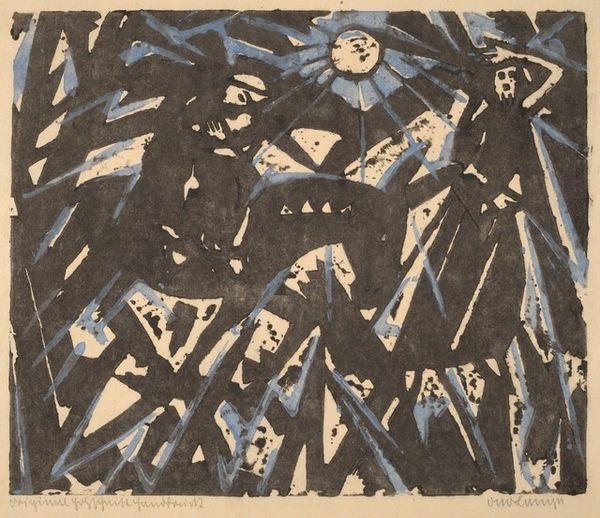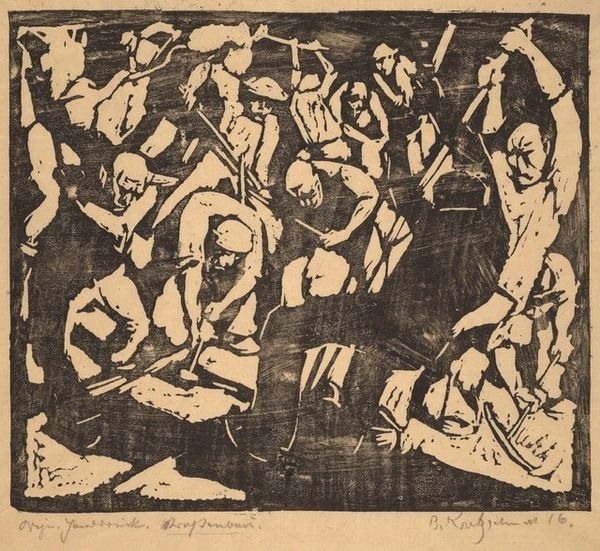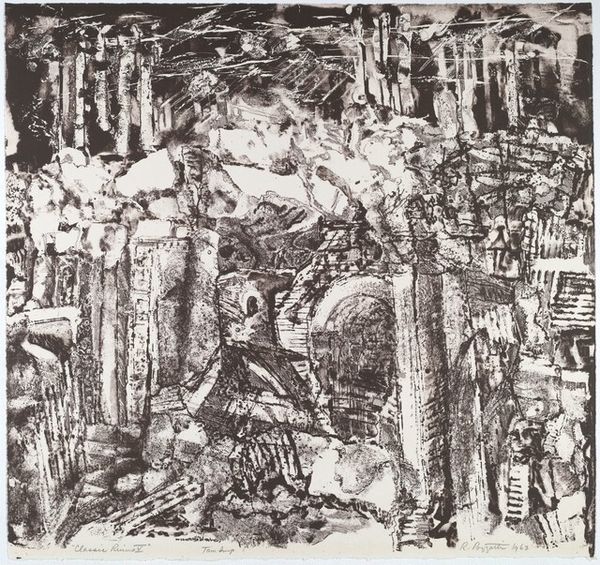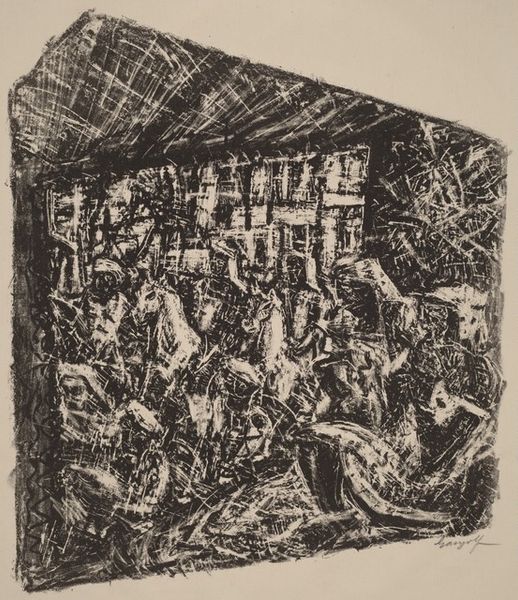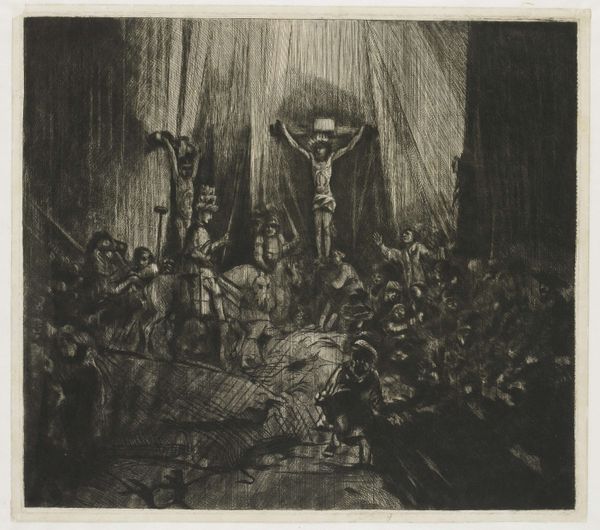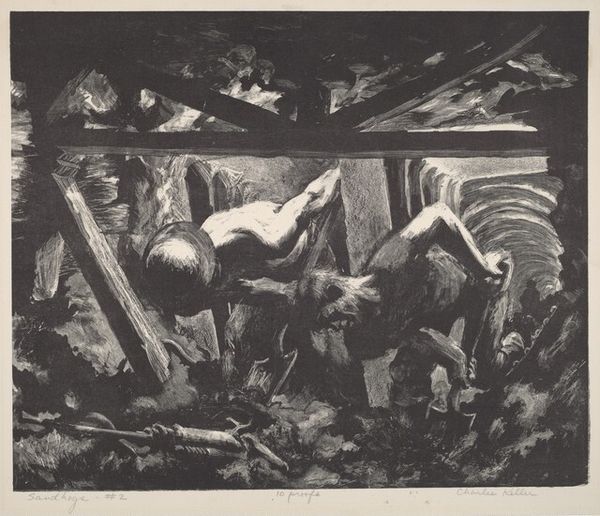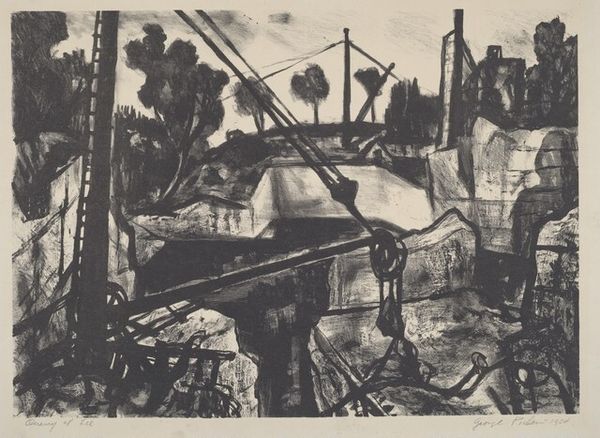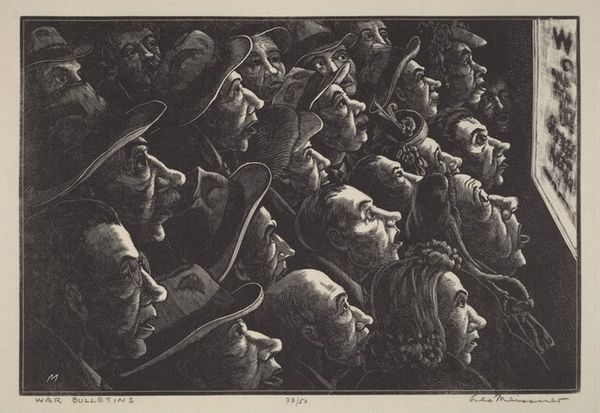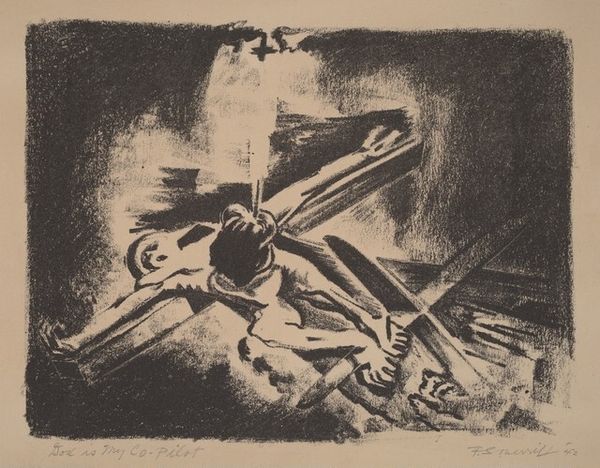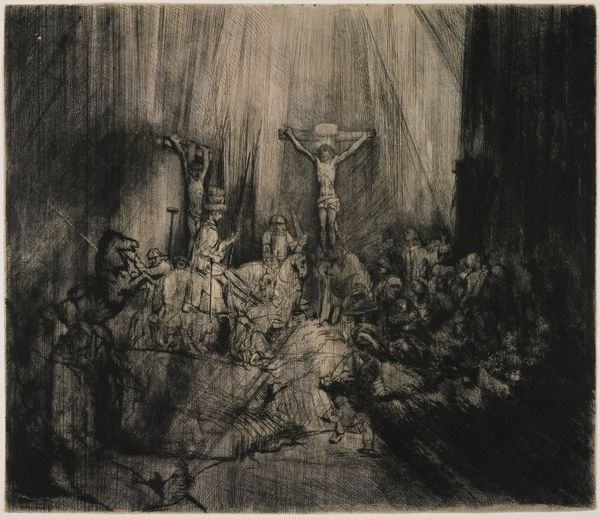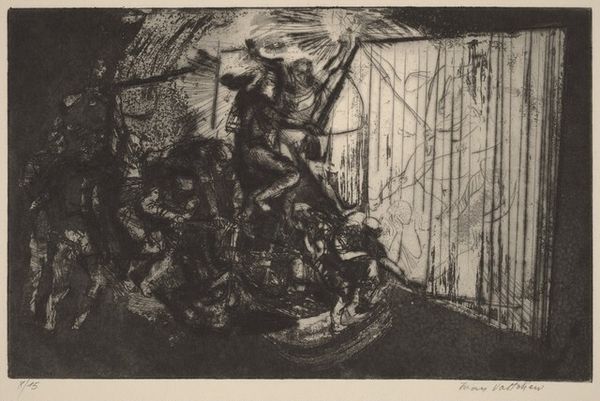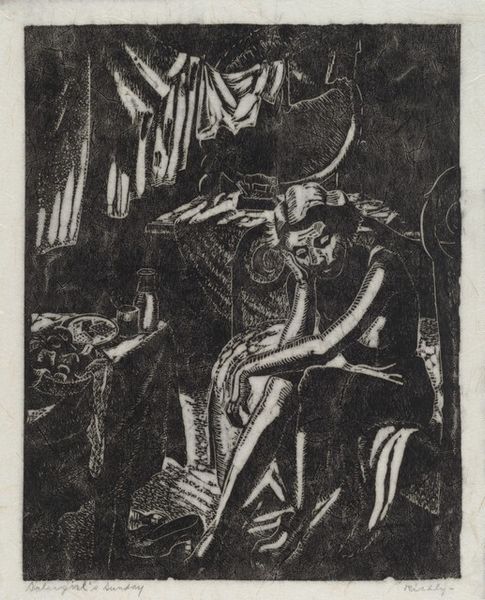
print, etching
#
new-objectivity
#
narrative-art
# print
#
etching
#
german-expressionism
#
figuration
#
expressionism
#
history-painting
Dimensions: plate: 23.9 x 29.5 cm (9 7/16 x 11 5/8 in.) sheet: 35 x 47.4 cm (13 3/4 x 18 11/16 in.)
Copyright: National Gallery of Art: CC0 1.0
Curator: Welcome. Before us is Otto Dix’s powerful 1924 etching, "Dance of Death Anno 18." The print exemplifies German Expressionism, capturing the horrors of World War I. Editor: My immediate reaction is chaos—a tangle of limbs and barbed wire. The high contrast and aggressive lines convey a sense of claustrophobia and utter devastation. Curator: Precisely. Dix uses the starkness of the etching to emphasize the fractured forms. Notice the compositional imbalance, the figures crammed into the foreground. It throws the viewer right into the heart of the carnage, doesn't it? Editor: It does, and the "dance of death" motif itself is laden with symbolic weight. Death as a dancer, pulling soldiers into the abyss. The barbed wire could even be read as symbolic of an uncaring nature turning violently against itself. Curator: The title firmly roots this in 1918, the war's final year. It acts as an accusation, a direct statement about the brutal consequences of conflict. Dix's service in the war heavily influenced his artistic perspective, moving towards a style focused on representing unflinching realism. Editor: Absolutely, he is one of the central artists associated with "war brutalism." But looking at this, don’t you see a parallel with much older depictions of martyrdom? Those twisted, broken bodies share the same visual language of agony and sacrifice – even though here, of course, there’s no redemption, no heaven awaiting. Curator: A keen observation. Dix evokes classical imagery, only to subvert it. It speaks to the disillusionment of a generation—the contrast underscores the chasm between heroism as perceived by the past, and the sheer grim suffering of industrialized warfare. Editor: Yes. The print demands we acknowledge not only the physical horror, but the psychological toll on individuals— the end of traditional, reassuring symbols for understanding death, history, or trauma. Curator: What I find impressive is how Dix translates raw, unfiltered emotion into formal, artistic elements, forging a commentary that continues to resonate across time. Editor: Ultimately, it's the visual economy—the dark intensity etched into the surface— that stays with you. A reminder that art at its best makes us confront the unbearable.
Comments
No comments
Be the first to comment and join the conversation on the ultimate creative platform.
